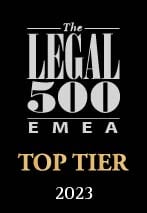Tudor Nacev, about the HTA Regulation (EU) 2021/2282
Regulation (EU) 2021/2282 of the European Parliament and of the Council of 15 December 2021 on health technology assessment and amending Directive 2011/24/EU (the “Regulation”) was recently published in the Official Journal of the EU.
The Regulation supersedes the current system of EU-funded project-based cooperation between Member States on health technology assessment by introducing a permanent framework for joint work that will cover:
- joint clinical assessments,
- joint scientific consultations,
- the identification of emerging health technologies,
- joint voluntary cooperation.
Coordination Group
Member State Coordination Group on Health Technology Assessment (the “Coordination Group”) will heave the leading role in the implementation of measures provided for by the Regulation will. The members of the Coordination Group are designated by member states. The members of the Coordination Group shall designate their national or regional authorities and bodies as members of subgroups of the Coordination Group.
- Joint clinical assessments
- What does joint clinical assessment mean?
The Regulation focuses on clinical aspects of HTA, i.e., the clinical effects and clinical safety of a new health technology, compared to existing technologies. Such assessments are intended to be performed at EU level, by representatives of Member States – i.e., the Coordination Group.
- What are the health technologies covered by the Regulation?
Coordination Groupwill conduct joint clinical assessments of new medicines and certain high-risk medical devices.
- When will joint clinical assessments start?
Starting with 12 January 2025 – for medicinal products with new active substances for the treatment of cancer and for advanced therapies;
Starting with 13 January 2028 – for medicinal products which are designated as orphan medicinal products;
Starting with 13 January 2030 – for medicinal products other than those referred above and that and falls within the scope of Regulation.
The European Commission, upon a recommendation from the Coordination Group, may adopt decisions establishing that medicinal products shall be subject to joint clinical assessment at an earlier date than set out above, provided that the medicinal product has the potential to address an unmet medical need or a public health emergency or has a significant impact on healthcare systems.
After 12 January 2025, the Commission, after seeking a recommendation from the Coordination Group, shall adopt a decision (renewed at least every two years), selecting the medical devices and in vitro diagnostic medical devices for joint clinical assessment.
- Who can initiate joint clinical assessment start?
The joint clinical assessment is initiated by the Coordination Group by designating subgroups on joint clinical assessments. After designated subgroups initiate scoping process (identifying the relevant parameters for the assessment – e.g., patient population, comparators, health outcomes), the developer of the health technology is required to submit the file.
- What is the outcome of the joint clinical assessment?
A joint clinical assessment is finalized with a report and a summary report. Such reports shall not contain any value judgements or conclusions on the overall added clinical value of the assessed health technology and shall be limited to a description of the scientific analysis:
- on the relative effects of the health technology, by assessing the health outcomes against the chosen parameters;
- on the degree of certainty of the relative effects, taking into account the strengths and limitations of the available evidence.
The reports are based on a file that comprises complete and up-to-date information, data, analyses and other evidence submitted by the health technology developer. The Coordination Group will carry out updates of joint clinical assessments where the initial report specifies the need for an update when additional evidence becomes available or where requested by one or more of its members and new clinical evidence is available.
- How long does the assessment takes?
The Coordination Group shall endorse the draft of the report no later than 30 days following the marketing authorization of the product by the European Commission. After the endorsement of the draft report, the relevant stakeholders submit their observation and the report is reviewed and finalised.
- What are the obligations of member States?
When carrying out a national HTA assessment, Member States shall:
- give due consideration to the published joint clinical assessment reports and all other information available on the dedicated electronic platform (the term ‘give due consideration’ means that the reports should be part of the documentation required by Member States authorities)
- take into consideration the file submitted by the health technology developer for the joint clinical assessment;
- not request at the national level information, data, analyses or other evidence that have been submitted by the health technology developer at EU level;
- share with the Coordination Group (through the dedicated electronic platform) information, data, analyses and other evidence received;
- share with the Coordination Group (through the dedicated electronic platform) the national HTA report of a health technology (which has been subject to a joint clinical assessment) within 30 days from the date of its completion (in particular, Member States should provide information on how joint clinical assessment reports were considered when carrying out the national HTA assessment).
- What are the rights of Member States?
- the Regulation shall not affect Member States’ competence to draw conclusions on the use of a health technology in their specific national health context. It shall not interfere with the exclusive national competence of Member States, including those for national pricing and reimbursement decisions, or affect any other competences which concern Member States’ management and delivery of health services or medical care or the allocation of resources assigned to them.
- Member States may supplement the joint assessment with additional clinical analyses that may be needed in their national HTA process (e.g., analyses related to national disease epidemiology or the specific national healthcare context).
- Member States may supplement the joint assessment with non-clinical analyses (e.g., cost and economic evaluation of a health technology; the ethical, organisational, social and legal aspects related to its use).
2. Joint scientific consultations
- What is the scope of joint scientific consultation?
The Coordination Group shall carry out joint scientific consultations in order to exchange information with health technology developers on their development plans for a given health technology (i.e., those consultations shall facilitate the generation of evidence that meets the likely evidence requirements of a subsequent joint clinical assessment on that health technology).
- When does the joint scientific consultation take place?
A health technology shall be eligible for joint scientific consultations where it is likely to be the subject of a joint clinical assessment and where the clinical studies and clinical investigations are still in the planning phase.
3. Emerging health technologies
In order to ensure the efficient use of available resources, the Regulation provides for a ‘horizon scanning’ exercise, to allow the early identification of emerging health technologies that are likely to have a major impact on patients, public health and healthcare systems. Such horizon scanning could be used to support the Coordination Group in planning its work, in particular in relation to joint clinical assessments and joint scientific consultations, and could also provide information for long term planning purposes at both EU and national levels.
4. Voluntary cooperation on health technology assessment
The Commission shall support the cooperation and the exchange of scientific information among Member States on:
- non-clinical assessments on health technologies;
- collaborative assessments on medical devices and in vitro diagnostic medical devices;
- HTA assessments on other health technologies;
- the provision of additional evidence necessary to support HTA assessments, in particular in relation to health technologies for compassionate use and obsolete health technologies;
- clinical assessments on health technologies subject to joint clinical assessment for which a joint clinical assessment is not yet initiated and of health technologies not subject to a joint clinical assessment, in particular health technologies for which the report on emerging health technologies has concluded that they are expected to have a major impact on patients, public health or healthcare systems.
The HTA Regulation entered into force in January 2022. Joint work such as Joint Clinical Assessments and Joint Scientific Consultations will only be carried out from January 2025.
The three-year delayed application period of the HTA Regulation aims to ensure that there is enough time to set up the organisational framework of the Regulation and to adopt the implementing and delegated acts and methodological guidance documents required by the Regulation. The delayed application also gives Member States time to adjust their national HTA legislations and processes, in line with the requirements laid down by the new HTA Regulation.
The manner in which the Romanian HTA regulatory framework will be updated in order to accommodate the requirements of the Regulation remains to be seen.





No Comments